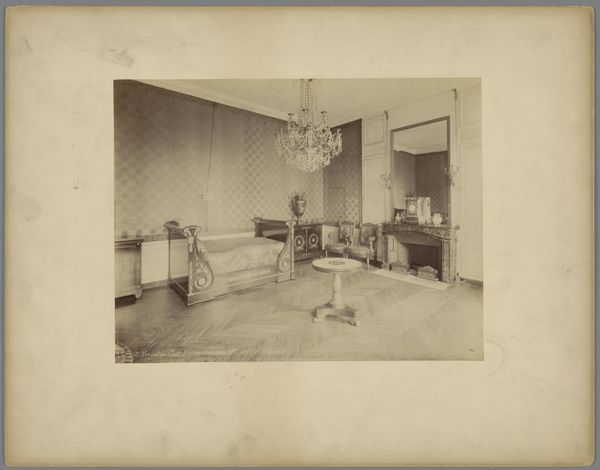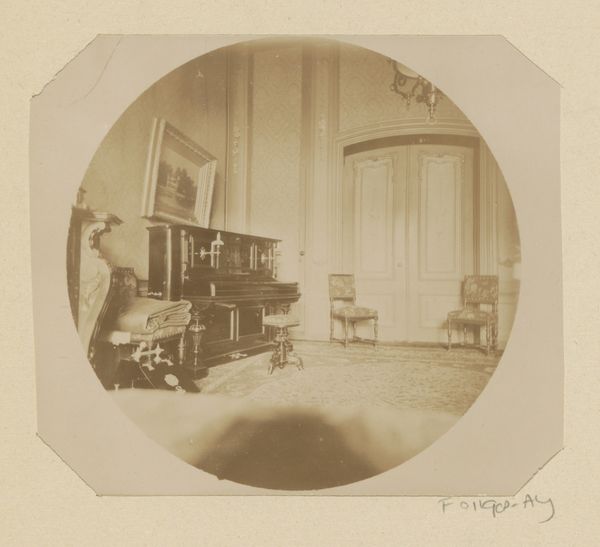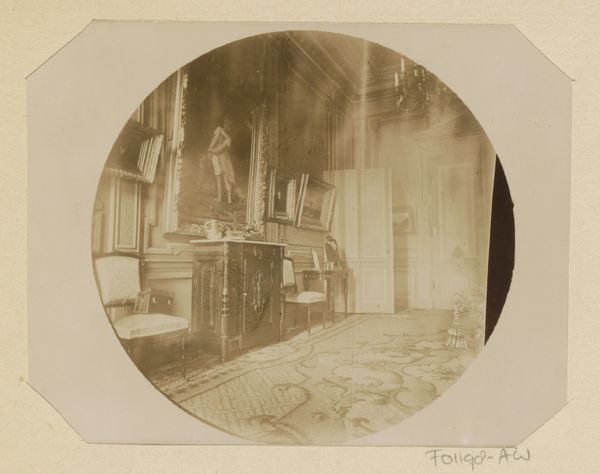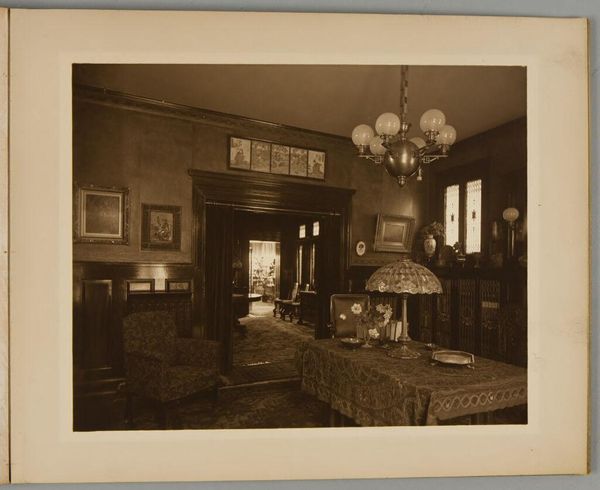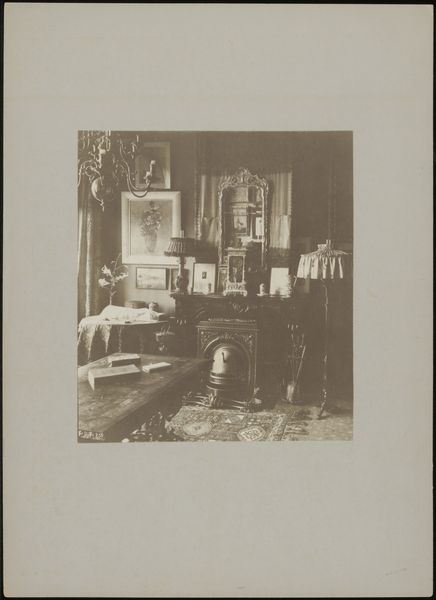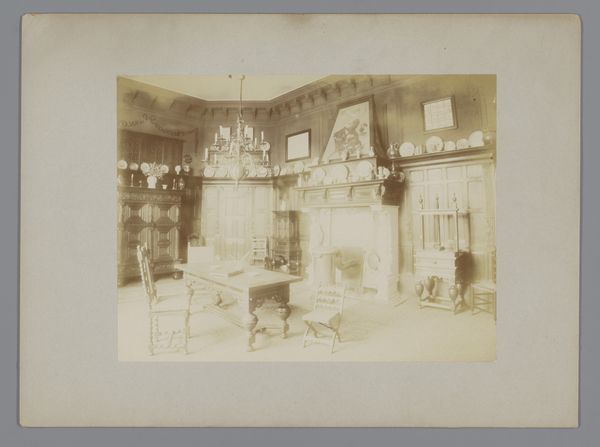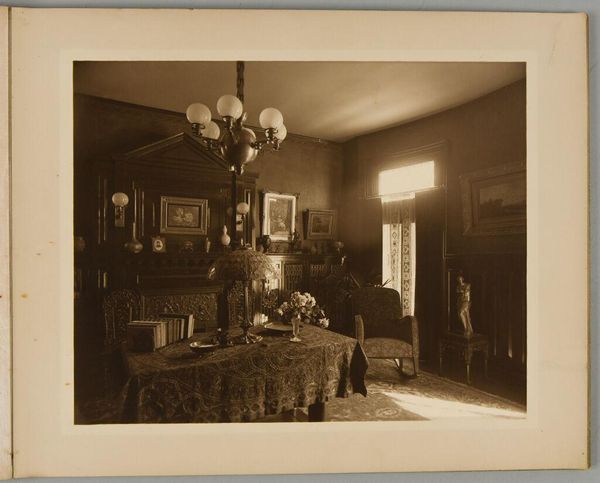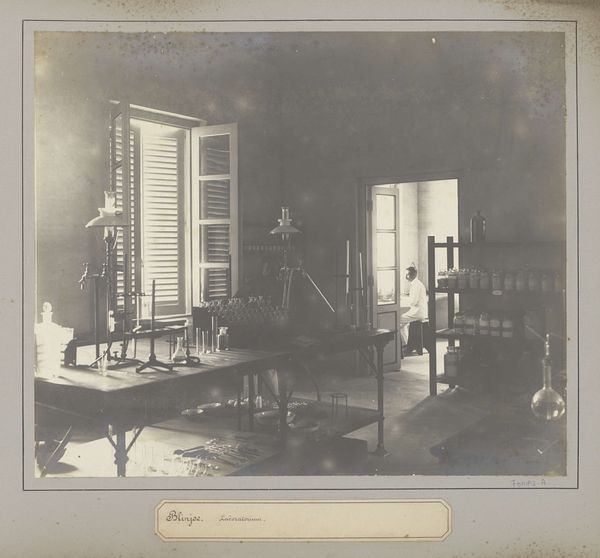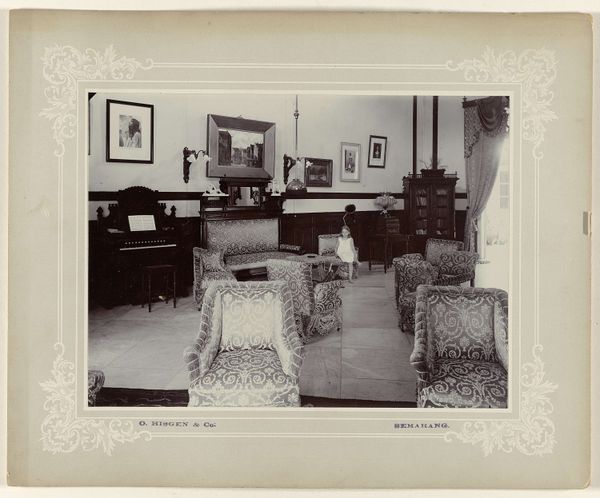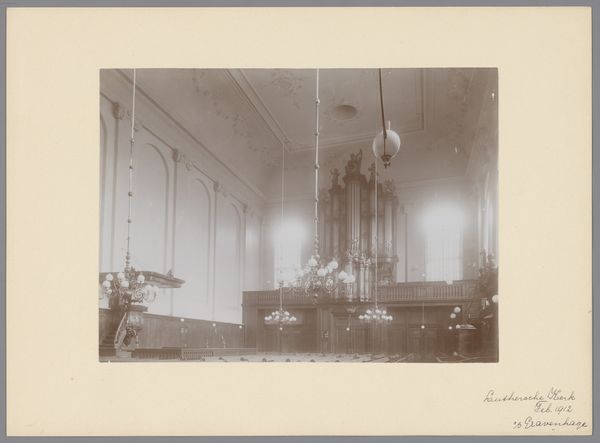
photography
#
portrait
#
landscape
#
photography
Dimensions: height 90 mm, width 113 mm
Copyright: Rijks Museum: Open Domain
Curator: This fascinating photographic print, titled "Interieur van het huis aan Herengracht 258, Amsterdam," was captured between 1889 and 1893 by Johanna Margaretha Piek. Editor: It’s a wonderfully staged, yet somehow cold, scene. The muted sepia tones contribute to an overwhelming sense of formality, even distance. The composition, especially the way the light falls, feels very deliberate. Curator: The photograph offers a glimpse into the domestic sphere of a bourgeois family in Amsterdam. Beyond its aesthetic qualities, we can ask: what societal expectations and gendered roles are inscribed in the domestic interior? What is included and what is not in Piek’s representation? Editor: Indeed. Notice the prominent desk, papers neatly stacked, bathed in the glow of the ornate lamp. The interplay of lines created by the furniture, and the careful arrangement of objects guides the eye towards the focal point. The high key is really key to all of it. Curator: Precisely, that deliberate order hints at the power dynamics within the household, specifically how domestic space, often coded as feminine, is negotiated within a patriarchal society. Whose intellectual labor occurs here? What is represented by this office? Editor: I am struck by the light, which pools, but almost grudgingly, around the desk, refusing to fully illuminate the objects in the room. Semiotically, what statements are being made here through her light work? Curator: Looking at this photograph now, through a contemporary lens, raises interesting questions. Piek, as a female photographer, would have occupied a liminal space – simultaneously observing and participating in this domestic structure. Is this image subversive or affirmative? Editor: It seems impossible to be certain. But the composition and attention to line suggest a certain meticulous intention beyond the simple reproduction of reality. It's an intriguing visual dance. Curator: It's certainly prompted me to rethink the photograph’s role in the late 19th century. Editor: Absolutely. The formalism allows us a framework from which we can explore its complexities on many levels.
Comments
No comments
Be the first to comment and join the conversation on the ultimate creative platform.

